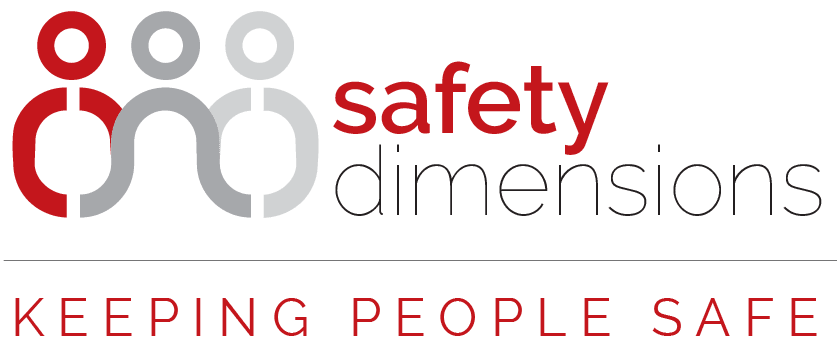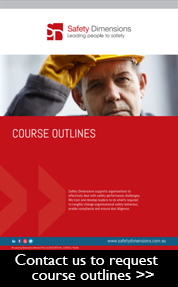
Toolbox or pre-starts talks are interactive safety sessions that help focus a workforce on safety. They take place prior to the beginning of a work shift and they are an opportunity for an organisation to ensure that its entire workforce is fit for duty.
Alternatively, toolbox and pre-start meetings can be a deadly-dull talkfest, with team members tuned out and bored, which ultimately represents a waste of everyone’s time.
If it’s your job to run the toolbox or pre-start meetings, weve compiled these six handy tips to help you ensure that your meetings are a great investment of time and remain an effective way to convey your safety messaging to the rest of the team.
1. Engagement is key
If it’s your job to run the meeting, it is on you to give your audience a reason to pay attention. The good news is that ensuring audience engagement is a technique that you can master.
Engagement is the combined result of your content (how interesting and relevant it is) and how the meeting is managed. Managing a meeting well involves planning ahead of time, careful selection of fresh content, as well as your delivery style – all of which are discussed below.
2. Plan your meeting ahead of time
Toolbox or pre-start meetings should be brief and held regularly. Many workplaces hold pre-starts daily and toolboxes weekly, although if you have a high, constant rotation of contractors coming in and out of your workplace, you might consider holding more frequent meetings. They usually last up to 15 minutes in duration.
First, draw up an agenda. Items to plan for include your goals of the meeting, the list of topics youll cover, when and where it will be held, and make sure you allow time for contractors and workers to provide feedback on any workplace health and safety issues they have. While some organisations have templates, there is nothing wrong with mixing up the order to keep things fresh.
Familiarise yourself with your topic. When you know your material well, youll be more relaxed when talking about it and curly questions wont throw you off easily either.
Finally, you should plan for how youll get your meeting back on track if it wanders off-course. If youre faced with someone who keeps interrupting, be direct and firm that the meeting has to move forward, and let them know you are open to discussing the issue with them after the meeting has ended.
3. Be clear what youre trying to achieve
If you dont know where youre going, youll end up somewhere else. Like all meetings, you need to be clear about what youre trying to achieve and share this information with people attending your toolbox/pre-start meeting.
Often, people use these meetings to encourage behavioural change. If this applies to you, what questions might you ask your colleagues and team members? What other important points can be raised? What techniques will you use to keep the engagement levels up?
Reinforce your key messages. You can check how well your messaging is understood by asking your participants to repeat back information or give you examples of what your meeting covered, for example, hazards and how to avoid them. Towards the end of your meeting, do a wrap-up to reinforce important safety points.
4. Mix up your content
The point of a toolbox/pre-start meeting is to share timely and important information about the workplace, safety and other topics that might affect your audience. Content might include specific job safety instructions, changes in job procedures and work practice, changes in rules, processes and regulations, equipment, client expectations and other relevant information.
Give examples of experiences you and others might have had that help focus the topics so they are directly relevant to the work everyone does and demonstrate your points by incorporating interactivity. For example, ask Who else has experienced something similar?, or What effect would that have on us? While statistics are good, stories are even better.
Avoid repetition. Repeating yourself over and over leads to disengagement by your audience.
Consider opening your meeting with positive feedback. Are there safety role models or actions taken that can be singled out for recognition? Youll create a great first impression by recognising team members who have actively worked to keep their workplace safe. A simple certificate, printed in-house, and delivered in front of their peers can be a very powerful symbol and reinforce to everyone the priority the organisation places on safety.
Using examples and real equipment makes safety more tangible and engaging.
Think ahead about your method of delivery – keeping messages positive and mixing up your content helps engagement.
5. Your delivery style does make a difference
Keeping your presentation style informal, positive and conversational will help enormously with ensuring the effectiveness of your toolbox meeting. Make and keep eye contact – and never just read to people. Nothing is more boring than being read to for any length of time.
Nobody wants to be talked at either, so encourage participation from others to keep the meeting interactive. Asking open-ended questions is a great way to get others talking (what and how are great question starters). Another tip is to ask questions early while everyone is still fresh. Keep your language simple and short, and avoid industry jargon and slang.
By letting others contribute, while you nod or smile in acknowledgement, youll encourage further discussion that leads to positive change. If it’s relevant, you can always ask for more information from participants to keep the discussion moving forward and, because youve carefully planned your meeting, you will have strategies up your sleeve to take back control if the meeting wanders off-course.
Finally, practice ahead of time so that you are feeling extra confident about your delivery.
6. Consider rotating the meeting management role
Increasingly in organisations, everyone is considered a safety leader. Some organisations use this principle as the basis for rotating the role of toolbox or pre-start meeting leader amongst different team members. This might be a great way to reinforce safety leadership at an individual level, develop an appreciation for the effort that goes into planning and managing a toolbox meeting, and encourage everyone to learn valuable leadership skills. It also provides a direct incentive to everyone to pay attention in toolbox meetings, so that they are prepared when it’s their turn.
By mixing up who delivers toolbox or pre-start meetings, you take advantage of individual approaches and perspectives, and allow for innovation by different team members. While one person might be interested in structure, another might be interested in statistics and so a natural by-product of rotating the role is that content remains fresh and engaging.
Want to elevate your Toolbox Talks?
Effective Safety Consultation Program
This program focuses on helping participants generate genuine two-way communication.
Get the skills to:
- Conduct effective and engaging Toolbox Talks, Pre-Start and safety meetings
- Gain employees’ and team members’ attention and get them motivated about safety
- Learn how to overcome potential barriers to achieving engaged participation
- Ensure others dont just hear, but understand safety messages
- Show confidence as a communicator and leader
- Apply effective consultation skills to all meetings
Vic Employers – Labour-hire workers now considered employees under amended OHS Act
In September 2021, new laws passed the Victorian parliament to ensure that labour-hire workers have the same rights and safety protections as other workers. The Occupational Health and Safety and Other Legislation Amendment Act 2021 (the Act) amends the Occupational...
What Do Van Halen & Brown M&M’s Have To Do With Safety?
Van Halen's Brown M&Ms - Their Key To Rock and Roll Safety There's a long tradition of musicians and actors adding absurd demands to their performance contracts just because they could. Van Halen, the American hair rock band of the 80s was infamous for this...
Work-related fatigue: a guide for employers from WorkSafe Victoria
WorkSafe Victoria has produced a guide on how to prevent workplace injuries to employees. According to the guide, "Fatigue is an acute and/or ongoing state of exhaustion that leads to physical, mental or emotional exhaustion and prevents people from functioning safely...




